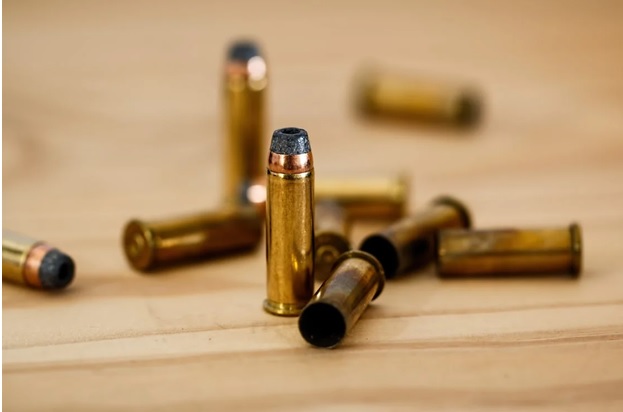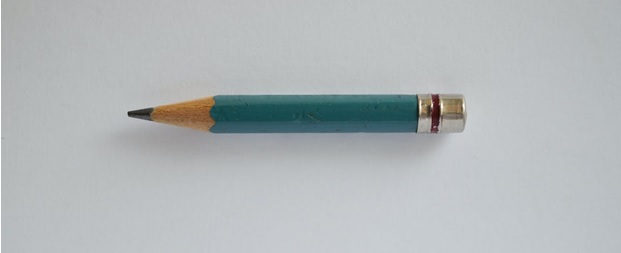
21 Nov Handgun Training Drills That Can Help Break Bad Shooting Habits and Improve Confident Handling
Becoming proficient with a handgun has its challenges, to be sure. Controlling recoil and muzzle flip is difficult, and you don’t have the advantage of a shoulder-mounted platform for stability.
In this area, as in all athletic pursuits, effective training will make you a more confident, accurate, and proficient pistol shooter.
Here are 5 basic drills you can perform to help.
1.Balancing Act (Brass on Front Sight)
This drill can help you determine whether or not you are jerking the trigger, which can cause issues with accuracy (and even clean misses).
Remove the magazine and clear the weapon. Then have a range partner balance a spent piece of brass on the top of your front sight (this is easier with some pistols than with others).
Press the trigger as smoothly and cleanly as possible. The goal is to break the trigger without dropping that brass case off the front sight.
If the brass drops off the sight, you’re probably either flinching or jerking the trigger before it breaks, which can cause some significant problems with accuracy, and compound others.
Repeat this drill until you can confidently break the trigger without knocking off the spent piece of brass.

2. Pencil Drill
Jerking the trigger is not the only form error that can cause serious issues with accuracy. Oftentimes, shooters apply too much pressure to the gun with their firing hand which causes the trigger finger to curve or arc as the trigger is pressed; this results in shots that skew off to the left side of the target and is called “smearing the trigger.”
A less common problem is applying too much pressure from the support-hand side, which can cause shots to skew off to the right (or firing-hand side).
Neither situation is a good thing. You want (ideally) to squeeze the trigger in a careful, deliberate motion, as much in a straight line as possible.
One drill that can help with this is called a pencil drill, and you don’t even need your gun for this.
Simulate the act of holding a handgun with your shooting hand and place a pencil on the web of your thumb, with the eraser against your trigger finger. (You’ll need a pencil of the proper length that can be balanced in this manner).
Then, “squeeze the trigger” with the pencil eraser filling the surrogate slot of the “trigger.” The goal is to be able to do so without displacing the pencil from the web of your thumb, and moreover, without skewing the tip of the pencil (opposite your trigger finger) to the right or left.
3.Single-Shot Drill
Shot anticipation can cause your groups to walk all over the target. If you’re recoil-shy and your sights dip in anticipation of the shot, this can cause your groups to skew to the bottom of the paper.
The single shot drill is not so much designed to help you fix shot anticipation as it is to help you identify the tendency.
Chamber one round into your handgun and remove the magazine. Take your time, fire the shot at the target and then prepare to take another. Watch your front sight intently and squeeze the trigger.
What you are looking for are signs of dipping that you may be making subconsciously as you anticipate the shot. Some shooters instinctively “push down” the muzzle in anticipation of muzzle flip.
Not only does this not help mitigate recoil, but it also destroys accuracy. The first step is identifying the tendency, then you can work on retraining your habits.
Perform this drill until you no longer notice a reflexive dip in your front sight.
4. Single-Shot from Draw
The single-shot from draw drill is intended to challenge your abilities with the added mix-up of the motions involved in drawing and firing the weapon.
Deliberately draw, point, and fire your handgun, then very carefully and deliberately reholster it. Remove your hand from the gun, reset yourself, and repeat the drill, deliberately.
Challenging yourself with this drill will help you establish consistent form in how you grip the handgun and how you bring the handgun up to the target.
Repeat this drill until you are able to produce fairly tight groups; once you can, consider increasing the distance to your targets or slightly increasing your speed; just don’t go too fast. This is not a quick-draw drill.
5. Ragged Hole Drill
This is a classic drill. Choose a target that has bright spots, preferably only one to two inches in diameter. Start about three yards from your target, point your handgun, and fire three shots in succession. Pick the same point of aim for each shot and do not chase your other shots.
The goal is to break bad habits associated with chasing other shots and produce a single “ragged hole.” After you become comfortable at three yards, move back five yards, then seven, repeating the drill.
When you can produce a ragged hole at seven yards, move back slightly to ten yards. Don’t rush your shots, and keep drilling until you can shoot a ragged hole at ten yards or greater.
Still Struggling with Muzzle Flip? Consider a Glock or HK Compensator
These drills are intended to help you identify your potential proclivity for jerking the trigger, smearing the trigger, and anticipating shots. They can also help you break the habit of chasing shots and develop confidence in unholstering, handling, pointing, shooting, and reholstering your weapon.
However, if you still struggle to manage muzzle flip, there are things you can do about it. Consult our recent blog, “Five Ways to Fight Muzzle Flip,” or install a muzzle device such as a Glock or HK compensator on your firearm.
We produce Glock, Ruger, S&W, CZ, and HK compensators for a wide range of handguns including the G17, G19, Ruger American Compact, S&W M&P Shield, and Heckler & Koch VP9.
Our Glock and HK compensators can reduce felt recoil and muzzle flip by as much as 50% without adversely affecting shot power, and most importantly, are easy to install.
Take a look through our collection and get in touch with us at 833-980-0333 if you have any questions about our products, compatibility, or additional drills you can perform to help you correct form errors and bad habits.




No Comments